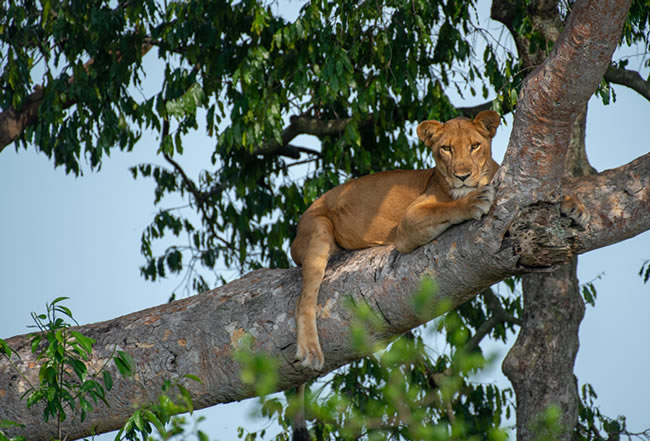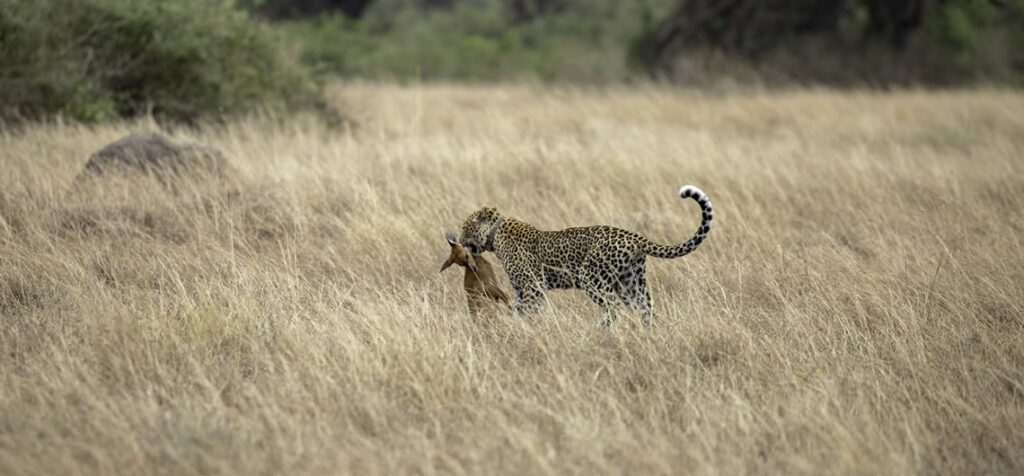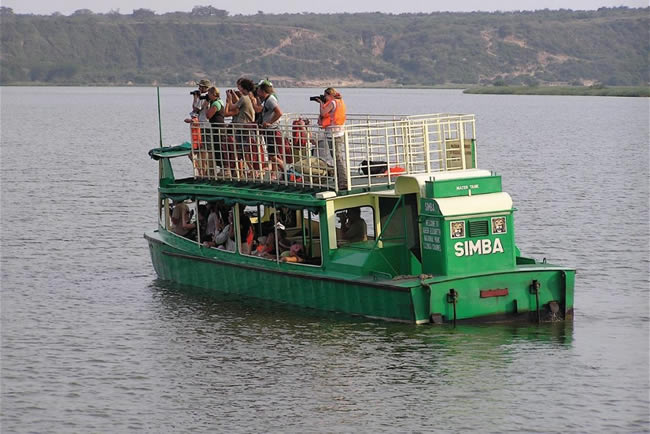Rome was not built in a day and so wasn’t Queen Elizabeth National Park, a lot of untold stories lie behind the transformation of this magnificent park into a collection of medleys of wonder that it’s referred to. The area occupied by Queen Elizabeth National Park originates from being a grazing area for Basongora community but as their cattle reduced in numbers due to raids and epidemics, it gave rise to the growth of vegetation and wild game population gradually.
The north of Lake George was declared a game reserve in 1906 and in 1912, the whole of Lake George and Ishasha areas became restricted regions. In 1952, the National Park Ordinance came to pass and the park came into existence as Kazinga National Park. As great leaders are worth remembrance, the park was renamed to Queen Elizabeth National Park after Queen of England honored a visit into its gracious lands in 1954.

Uniqueness of the park.
- Kazinga channel holds the world’s largest concentration of smooth shinny and slippery hippopotamuses. While in the park, tourists get to enjoy a range of about 2,000 hippos extremely opening their jaws on the river shores or slouching in the fresh waters of Kazinga channel.
- Lions found in the Ishasha sector depict a true gesture of leadership as they survey the wilderness from the top of cactus trees. There are only two places in Africa where these rare species can be glimpsed and Ishasha sector gives a high probability of spotting them.
- Queen Elizabeth National Park has a record of being the second highest holder of bird species in Africa. With a variety of 619 bird species, visitors get amazed by the chirps and strong pitched voices given off by these beautiful creatures.
- Queen Elizabeth National Park is the most bio-diverse park in the country. While in the park, one can enjoy sights of thick undergrowth, jagged rocky walls, lush green forests, grasslands, running streams of fresh water among other natural collections.
Tourist attractions in the park.
Kazinga channel.
This is among the main components of nature to the park as initially the park was named after it. The vast nature filled channel links Edward to George and visitors shouldn’t miss on the bloat of hippopotamuses and endless Nile crocodiles.
Lake Katwe.
This is a historic saline crater lake that has an inlet but without an outlet making the waters salty to the extent that the concentration intensifies in the dry season forming salt pans on the bottom of the lake. This Park offers a splendid crater drive through the amazing crater lakes and tourists can enjoy the salt mining process and enroute to the Germany salt factory whose premises linger with a variety of history.
Wildlife
To be crowned the medley of wonders was after a long thought that comprises of having a natural gift of about 95 mammals, 3000 hippos, 200 buffaloes, 4000 elephants and the 600 different bird species color the wilderness with beauty and sound.
Tree climbing lions

The lions residing in Ishasha sector have a peculiar demonstration of showcasing themselves in the limelight of tree branches. If not spotted in this park, tourists are left with just Lake Manyara National Park in Tanzania but visitors stand better chances of sighting them while in Ishasha sector.
The highlights of a safari made to this park are surely these tree climbing lines because they manifest their true nature of leadership and being aggressive while preying on their hosts.
Omwani coffee plantation
Feminist visitors and coffeeholics are surely glued to this plantation as its entirely run by women under their association. The collective efforts of these women give birth to splendid huge coffee beans that are fit for local use and export. A walk into the plantation gives visitors an opportunity to learn about growing and processing the coffee.
Crater lakes in the park
The Park offers a 27km crater drive where visitors spot on over 10 crater lakes whose history about their formation is strikingly amazing. The crater lakes were a result of volcanicity and they offer breathtaking scenery that challenges tourists into hiking and photography.
The equator and queen pavilion
The northern entrance to the park gives one an opportunity to stare at Queen’s pavilion that was honored by the Queen during her visit in 1954 and a permanent structure was constructed in 1959. On the other hand, beauty and bundles of joy of being in both the north and south hemisphere are felt by visitors while at the equator mark in Kikorongo.
Activities in Queen Elizabeth National Park.
Game drive

Visitors shouldn’t miss out safari experiences on various trails in Mweya peninsula while enjoying their four-wheel drive vehicle through thick vegetation covers to survey teeming animals that can be admired like elephants, buffaloes, warthogs, lions, leopards, antelopes, etc.
Night game drives as well offer adrenaline rush to tourists as they get to face fears of watching nocturnal animals bring out their best selves at night.
Ishasha sector is another exciting region where tourists get the opportunity of dazzling sights given off by lions ruling over the jungle from tree branches.
Boat cruises

Moving over water has been modified by the engine of a boat and at a cost of $30 per person, visitors enjoy the freshness of water for over two hours while they appreciate the pretty green surrounding and wowing on a range of water animals and birds like elephants, crocodiles, hippos, buffaloes, water bucks, and other water creatures.
Chimpanzee trekking in Kyambura Gorge

Chimp trekking is a popular activity in Uganda and so even visitors in Queen Elizabeth national park can’t miss a glimpse on the amazing chimps that inhabit this gorge. There are only 117 chimps obliged to offer preferential treatment to visitors of Queen Elizabeth National Park.
Visitors embark on trekking for over three hours just to spend one hour appreciating the natural beautiful black chimps that call Kyambura gorge home.
How to get to Queen Elizabeth National Park?
Tourists can fly to the park from Entebbe international airport or Kajjansi airfield. They can schedule or charter a domestic flight to one of the closest airports, including Ishasha, Mweya and Kasese. This journey in the space usually lasts one to two hours.
Hitting the road is the commonly used transport means, taking nearly eight or more hours for travelers to reach Queen Elizabeth National Park. There are two routes that can be opted for revealing different sceneries in the towns that are by passed to get to the park. Traveling from Kampala via Mbarara lets visitors access Queen Elizabeth National Park through the east and the north of the park is accessed via Mubende – Fort Portal route.
Best time to visit Queen Elizabeth National Park?
Lake Katwe is a salty crater lake but evidence is more visible during dry seasons where the lake bottom forms salt pans that visitors can enjoy viewing in the months of December to February and June to October.
Beautiful scenery of the park builds up during wet seasons when the vegetation is thick and dark green hence visitors in love with scenic filming can opt for the wet months from March to May and late October to mid – December.
